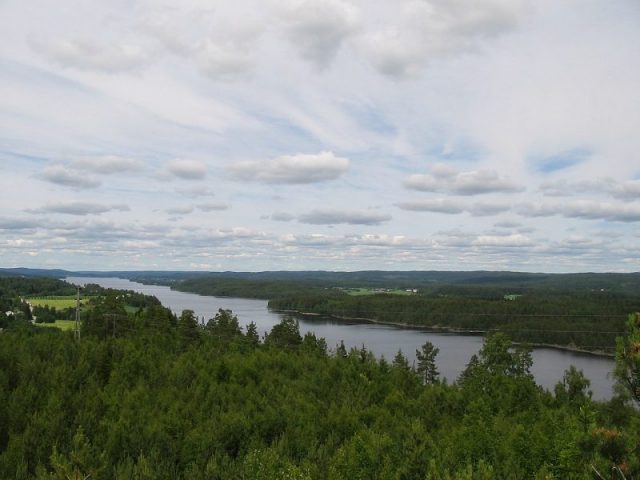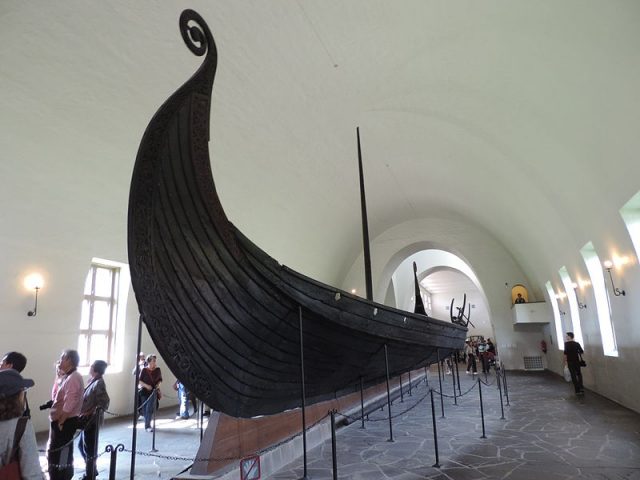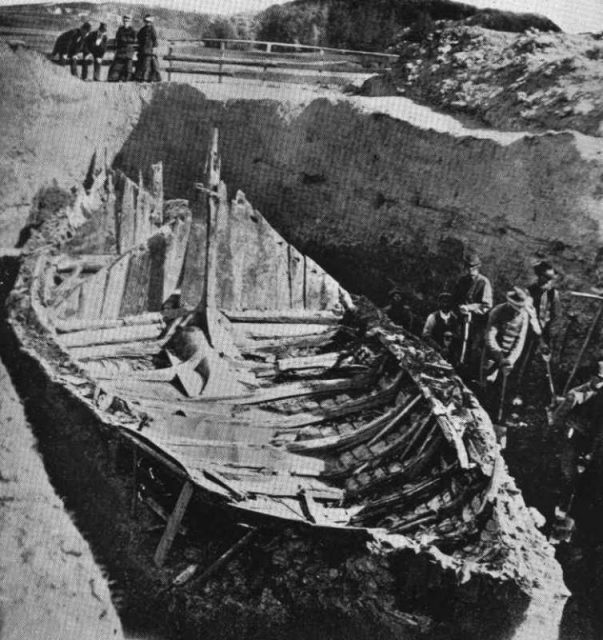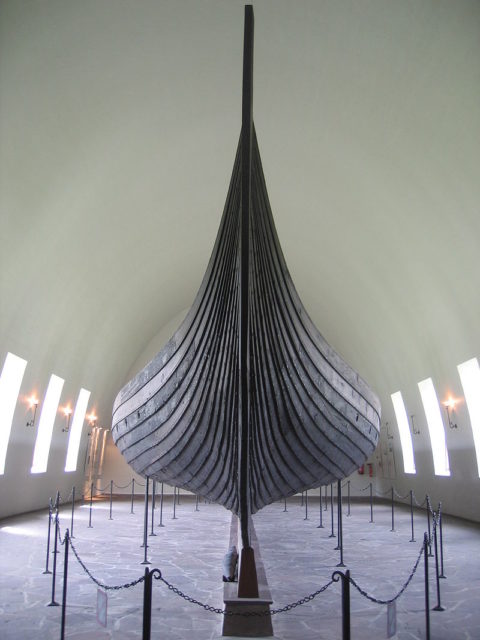Using radar, the archaeologists could tell there was something big buried beneath the ground in a cemetery in Norway. To their astonishment, what they detected was a 66-foot-long ship–one of the largest Viking ship graves ever found.
The Norwegian Institute for Cultural Heritage Research (NIKU) said that archaeologists discovered the anomaly in Østfold County. The ship was buried about 1.6 feet beneath the ground, they said in a statement. Outlines of the keel and the first few strakes, or lines of planking, were visible in the radar scans.
The leading theory is that the ship was buried more than 1,000 years ago to serve as the final resting place of a prominent Viking king or queen.
The outlines of a Viking ship within a burial mound. Photo by NIKU
Experts say intact Viking ship graves of this size are rare. “I think we could talk about a hundred-year find,” said archaeologist Jan Bill, curator of Viking ships at the Museum of Cultural History in Oslo, in an interview with National Geographic. “It’s quite spectacular from an archaeology point of view.”The ship is part of a cemetery that also contains at least seven burial mounds, which are dome-shaped hills of dirt and stones piled on top of a grave.
The remains of five longhouses were also detected near the cemetery.

Østfold County, Norway. Photo by Vidariv CC BY-SA 3.0
A ship was a Viking’s most cherished possession, and if an elite Viking did not die at sea, he would be buried in a ship on land. The vessels used were real ships, and corpses were often surrounded by a mixture of weapons, pottery, and drinking horns. Another little-known facet about the Vikings is the amount of Viking words still used in the English language:Ship burials held great meaning for the Norse people, and those buried in ships or boats were almost exclusively elite warriors and chiefs.

Viking Ship Museum – Oseberg ship. Photo by Vassia Atanassova – Spiritia CC BY SA 3.0
In interviews, the archaeologists re-created the discovery.
“In the middle of the mound, we discovered what is called an anomaly, something that is different,” said study author Dr Knut Paasche. The mysterious shape “clearly has the shapes and dimensions of a Viking ship.”“What we cannot say for sure is the condition of the conservation. Yes there was a boat there, but it’s hard to say how much wood is left,” Dr Paasche told the Daily Mail.

Gokstad Viking ship excavation. Gokstad Mound, 1880.
Scientists hope that this discovery will yield insights on the Vikings’ expeditions in the Middle Ages.
“This find is incredibly exciting as we only know [of] three well-preserved Viking ship finds in Norway [that were] excavated [a] long time ago. This new ship will certainly be of great historical significance as it can be investigated with all modern means of archaeology,” said Paasche.
How the ship got there is intriguing.

The Gokstad ship at the Viking Ship Museum in Oslo, Norway. Photo By Karamell CC BY-SA 2.5
Archaeologists believe it would have been dragged onshore from the Oslo fjord nearby. “Ships like this functioned as a coffin,” says Paasche. “There was one king or queen or local chieftain on board.”
Paasche plans to return in the spring of 2019 to conduct more scans, including using a magnetometer to get more intense information on the site. It’s possible they will dig test trenches to see what the ship’s condition is. If they do find wood from the ship’s hull preserved beneath the ground, it will be very helpful to date the find.
The chances of finding a king’s treasure are slim, according to National Geographic. Because they were so prominent in the landscape, many Viking Age burials were robbed centuries ago.
Read another story from us: 8-yr-old Girl Finds Ancient Pre-Viking Sword in Swedish Lake
The first Viking ship to be scientifically excavated in the UK was discovered in the most western part of Scotland. It held a man who was buried with his shield, sword, and spear and grave goods that included an Irish brooch and a drinking horn.



No comments:
Post a Comment